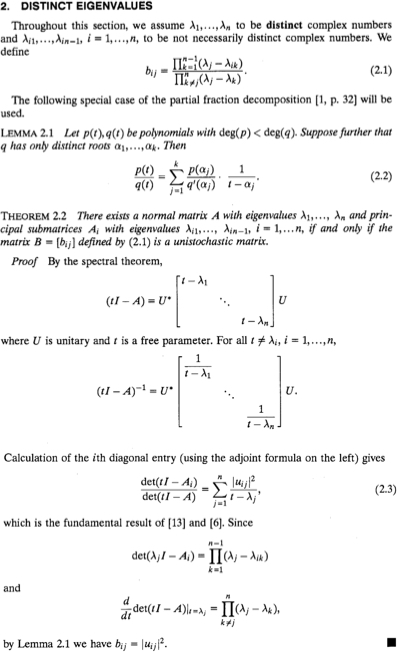This article describes the discovery by three physicists, Stephen Parke of Fermi National Accelerator Laboratory, Xining Zhang of the University of Chicago, and Peter Denton of Brookhaven National Laboratory, of a striking relationship between the eigenvectors and eigenvalues of Hermitian matrices, found whilst studying neutrinos.
Their result has been written up in collaboration with Terence Tao here. From what I understand, although very similar results had been observed before, the link to eigenvector computation had not been explicitly made prior to now. For completeness here is the main result, "Lemma 2" from their paper:
Let $A$ be a $n × n$ Hermitian matrix with eigenvalues $\lambda_i(A)$ and normed eigenvectors $v_i$. The elements of each eigenvector are denoted $v_{i,j}$. Let $M_j$ be the $(n − 1) × (n − 1)$ submatrix of $A$ that results from deleting the $j^{\text{th}}$ column and the $j^{th}$ row, with eigenvalues $\lambda_k(M_j)$.
Lemma 2. The norm squared of the elements of the eigenvectors are related to the eigenvalues and the submatrix eigenvalues, $$|v_{i,j}|^2\prod_{k=1;k\neq i}^n(\lambda_i(A)-\lambda_k(A))=\prod_{k=1}^{n-1}(\lambda_i(A)-\lambda_k(M_j))$$
I was wondering what are the mathematical consequences of this beautiful result?
For example are there any infinite dimensional generalisations? Does it affect matrix algorithms or proofs therein? What about singular values?


